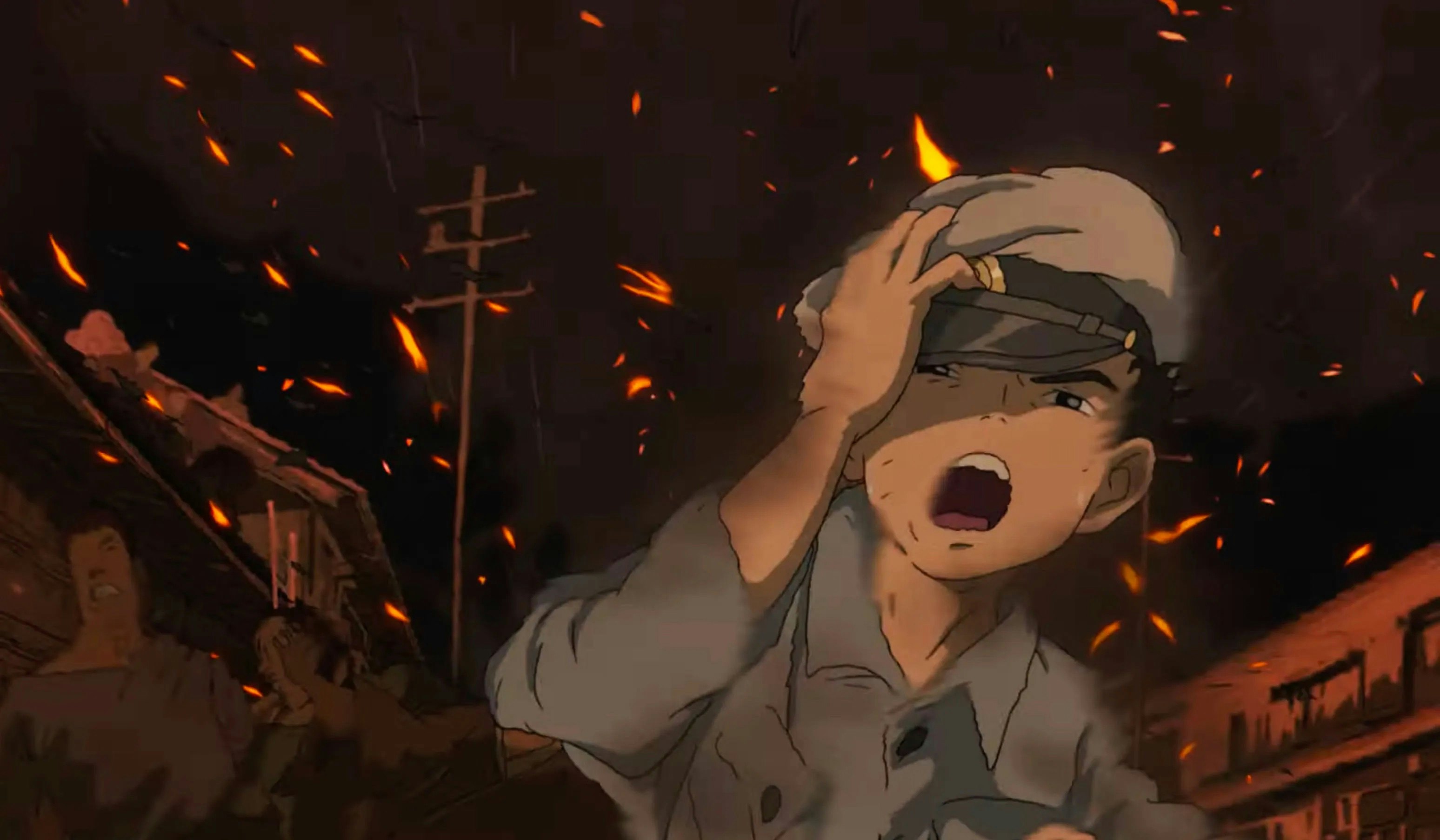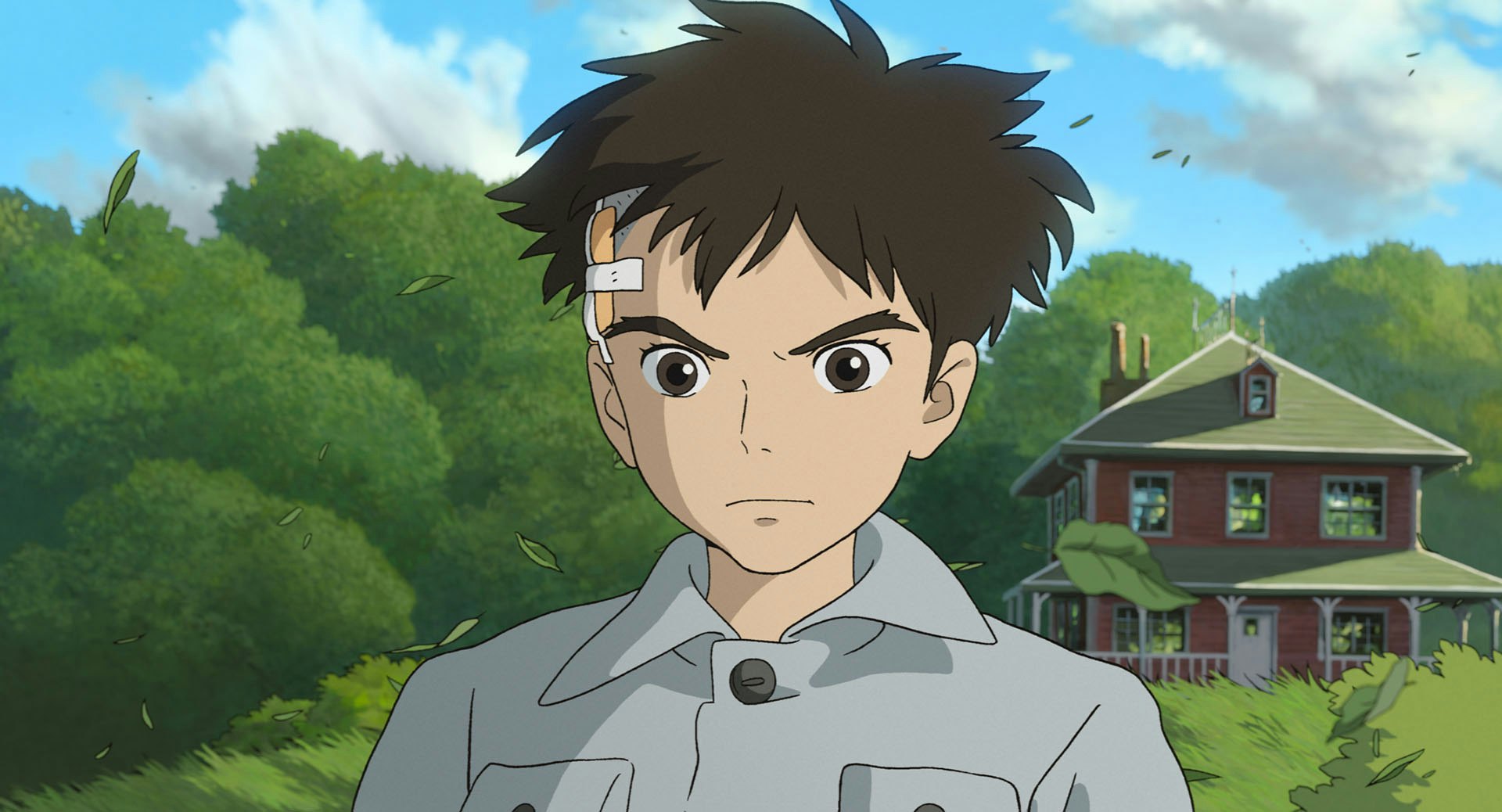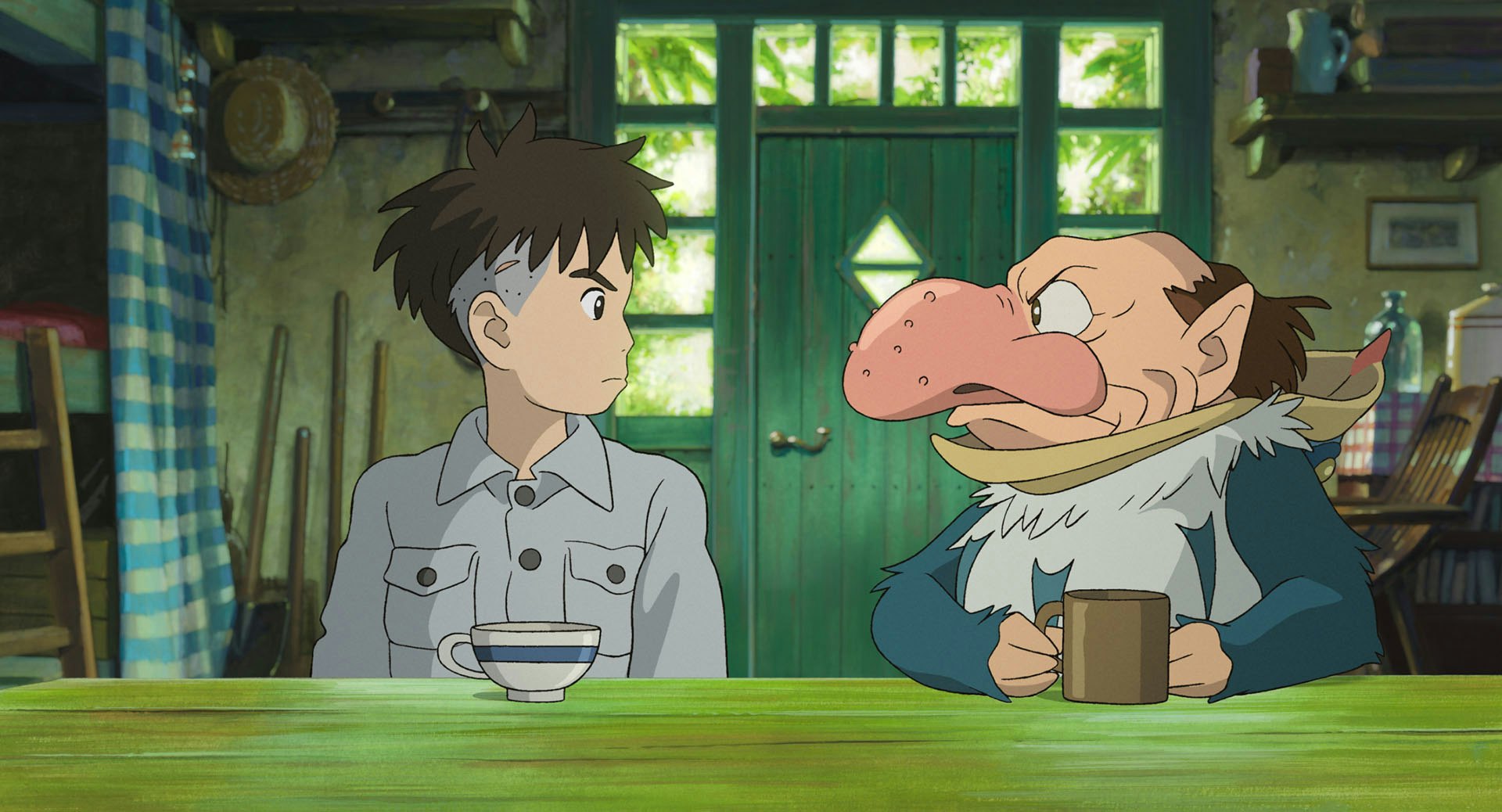
In the opening minutes of The Boy and the Heron, director Hayao Miyazaki does something he’s never done before. The soft, rounded character designs that have come to characterize Studio Ghibli’s signature style start to morph and mutate. The shadows around them come alive, as if the grime of war has become sentient. Fire licks the side of the frames as if it will escape. It’s the height of World War II, and 11-year-old Mahito is running through the streets of Tokyo, pushing his way through terrified onlookers toward the burning hospital where his mom is currently trapped.
It’s a breathtaking sequence that looks like nothing Miyazaki has animated before: dark, shadowy, malleable, even a little grotesque. In those first 10 minutes, it feels like Miyazaki is rejecting every stereotype of Studio Ghibli films as the purveyor of whimsical fluff, as if to say, “Look! I can make you feel so much more than cozy!”

But the sequence is a result of more than just Miyazaki’s handiwork. “That scene was, of course, not done by one single animator,” The Boy and the Heron cinematographer Atsushi Okui tells Inverse. “All of the motion that you see in the film or in that scene, in that opening sequence, was hand drawn. So that means layer after layer, after a lot of layers.”
“We wanted the scene to kind of echo or reflect Mahito’s psyche and his emotions,” Okui adds. “So we had the frame being very unstable and shaky, and we have the entire frame not in focus and so forth.”
Since its founding in 1985, Studio Ghibli productions under Miyazaki have operated much in the same way. Miyazaki will draw the storyboards, and often much of the key animation, by hand, while a staff of talented animators will draw the rest of the frames. CGI has been used on a variety of projects, like a handful of scenes in Princess Mononoke or Spirited Away, but Ghibli has remained one of the last strongholds for hand-drawn animation. But as that opening scene shows, that doesn’t mean Miyazaki is done evolving as an animator, or that Ghibli’s style will always remain static. “What’s happening in the workplace is pretty much the same this time around as with previous films,” Okui says. “But in terms of the content of the film, I would say that this is much more personal to Mr. Miyazaki.”

The Boy and the Heron follows young Mahito, who’s forced to move to a countryside estate with his father and new stepmother a year after his mother died in that hospital fire. But strange encounters with a talking gray heron lead him to a magical alternate reality where giant, talking parakeets and fish gut-eating spirits inhabit the waterlogged world. It may seem like too fantastic a premise to be described as semi-autobiographical, but The Boy and the Heron’s animators could immediately recognize this project drew from Miyazaki’s own life.
“I started reading it, and I immediately knew that the protagonist was Miyazaki-san because it talks about his boyhood,” supervising animator and animation director Takeshi Honda says. “And I knew right then and there, although I hadn’t read the entire story, that it was going to be packed with what Miyazaki-san really wanted to say.”
Honda was one of the first people to see Miyazaki’s storyboards for his latest movie, which at the time only had a germ of an idea and no title. But even with the storyboards fed to him piecemeal (Honda said it was “like you’re working on a series, episode by episode”), he could recognize the shared elements of Mahito’s life with Miyazaki’s. Like Miyazaki, Mahito came of age at the height of World War II. Both of their fathers profited from the war by manufacturing fighter plane parts. Miyazaki and Mahito both had distant relationships with their fathers and deep love for their mothers, and both are given the chance to create beautiful new worlds for themselves.

It was interesting that Miyazaki ended up trusting one of the movie’s most pivotal scenes — both narratively and artistically — to another animator almost entirely. The opening sequence, “where Mahito runs to the hospital and the hospital is on fire or that flashback scene with the mother, that’s all done by one single animator,” Okui reveals.
That animator was Shinya Ohira, a key frame artist on The Boy and the Heron who also worked on Spirited Away, Howl’s Moving Castle, and The Wind Rises. “His work is exceptional,” Honda says. “And you can immediately tell this is Ohira’s scenes in each of these films. His work is very quintessentially him.”
According to Honda, Miyazaki assigned Ohira to this opening sequence so that audiences would get that immediate gut punch within the first few minutes. “Which is why it’s so wonderful,” Honda says, “because the impact, the visual impact that his work has, is unlike no other.”

With its staggering opening sequence and the dense narrative that follows, The Boy and the Heron feels very much like a final magnum opus from Miyazaki, one that serves as a defining statement on his career. Or is it? Leading up to The Boy and the Heron’s North American premiere, Studio Ghibli producer Toshio Suzuki revealed that Miyazaki is already planning his next film, a project both Okui and Honda would both be eager to work on. But they still urge patience for eager fans.
“Everything’s up in the air. Nothing has been decided. But I will say that if something happens, I would definitely want to be a part of it,” Okui says.
Honda reveals “there have been discussions about stories that [Miyazaki] may be telling,” but he can’t divulge what they are. But as Hideaki Anno’s longtime collaborator who gave up working on the final Evangelion movie to be the supervising animator for Boy and the Heron, Honda has been down this road before. “Miyazaki-san was like 76 or 77 years old at the time. And he said, ‘Nobody in the Miyazaki family has lived beyond 80, I don’t have time. I have maybe only three years left, so this is going to be my last one, probably, so you’re going to have to come on board,’” Honda says. “It was very conniving of him, looking back in retrospect. But when Miyazaki-san says this to you, you really have no choice.”







